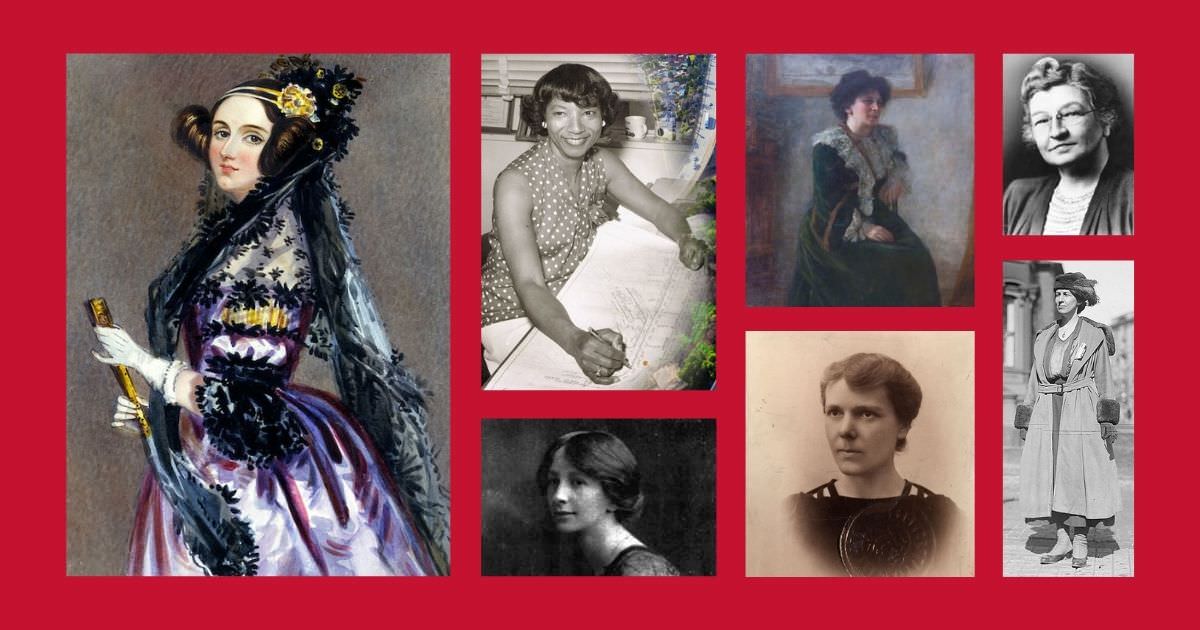During Women’s History Month we would like to call attention to some of the women who were pioneers in the engineering field and who helped lay the groundwork for some of the traffic engineering and transportation planning work we do today, not to mention the women at Wells + Associates who lead and manage projects and relationships with our valued clients.
Pioneering Women Engineers from the 1800s to Today
Ada Lovelace
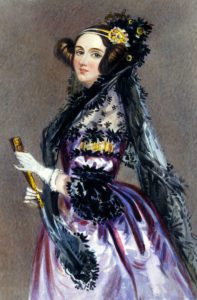
Ada Lovelace (1815-1852), daughter to Lord Byron and Lady Anne Isabella Milbanke Byron, exhibited a gift for mathematics at an early age. She was privately schooled in mathematics before famously collaborating with Charles Babbage on his “Analytical Engine.” Her educational and social efforts brought her into contact with leading scientists of the day, including Andrew Crosse, Sir David Brewster, Charles Wheatstone, and Michael Faraday as well as the author Charles Dickens – contacts which she used to further her education.
Among other ideas, she theorized a method for the Engine to repeat a series of instructions, a process known as looping that computer programs use today. Her work earned her the designation of the “first computer programmer.”
![]()
Hertha Marks Ayrton
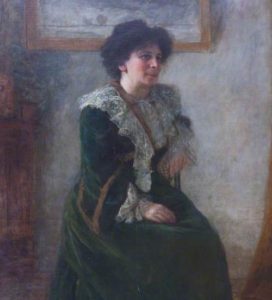
Hertha Marks Ayrton (1854-1923) was an award-winning British engineer, mathematician, inventor and physicist. She helped develop electric arc lighting and invented a fan to clear poisonous gases away from the trenches, with over 100,000 fans dispatched to the Western Front in World War I. She studied mathematics at Cambridge University in 1880, but was denied a degree, as women were only granted certificates of completion at the time. A year later, upon passing an external examination, the University of London awarded her a Bachelor of Science degree.
![]()
Alice Perry
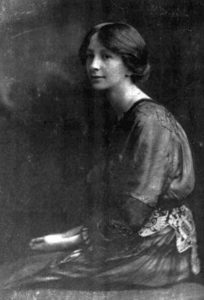
Two European women are recognized as the first female engineers in Europe, having received engineering degrees in the early 1900s. Alice Jacqueline Perry (1885-1969), pictured here, was the first woman in Ireland or Great Britain to graduate with a degree in engineering, having switched from studying for a degree in arts. She earned her engineering degree with first class honors in 1906 from Royal University, Galway. She remains the only woman to have been a county surveyor (county engineer) in Ireland. In 2017 NUI Galway held an official ceremony to mark the naming of the Alice Perry Engineering Building.
![]()
Elisa Leonida Zamfirescu
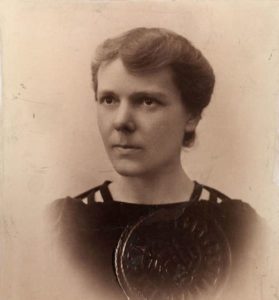
Elisa Leonida Zamfirescu (1887-1973) was rejected by the School of Bridges and Roads in Bucharest, Romania, but was later accepted at the Royal Academy of Technology in Berlin. She graduated from the university in 1912 with a degree in engineering. After World War II, she worked at the Geological Institute where she led several geology laboratories and participated in various field studies, including some that identified new resources of coal, shale, natural gas, chromium, bauxite and copper. She was the first woman engineer in Romania, and the first female engineering graduate in Germany.
![]()
Nora Stanton Blatch Barney
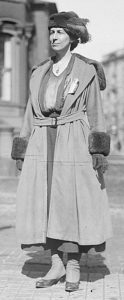
In the United States, Nora Stanton Blatch Barney (1883–1971), the granddaughter of Elizabeth Cady Stanton, was the first woman to receive a degree in civil engineering from Cornell University in 1905. In the same year, she was accepted as a junior member of the American Society of Civil Engineers. In 1916, she sued the ASCE for refusing to admit her as a full member, even though she met all requirements. Blatch lost. In 2015, she was posthumously advanced to ASCE Fellow status.
In 1909, she began working as an engineer for the Radley Steel Construction Company. She then worked for the New York Public Service Commission as an assistant engineer, and later for the Public Works Administration in Connecticut and Rhode Island as an architect, engineering inspector, and structural-steel designer.
![]()
Olive Dennis
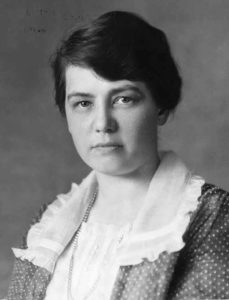
Olive Dennis (1885-1957), who became the second woman to graduate from Cornell with a civil engineering degree in 1920, was initially hired by the Baltimore and Ohio Railroad as a draftsman to design bridges. She later became the first person to claim the title of Service Engineer when the President of the railroad observed that, since half of the railway’s passengers were women, the task of engineering upgrades in service would best be handled by a female engineer.
Her design innovations changed the nature of railway travel. Dennis was the first woman member of the American Railway Engineering Association and was elected as a member of the British Women’s Engineering Society in 1931.
![]()
Edith Clarke
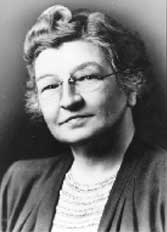
Edith Clarke (1883-1959), the inventor of the graphical calculator, was the first woman to earn a master’s degree in MIT’s electrical engineering department in 1918. Prior to that, she earned a bachelor’s degree in mathematics and astronomy from Vassar College. She worked on the design and building of hydroelectric dams in the West Hoover Dam, contributing her electrical expertise to develop and install the turbines that generate hydropower there to this day.
Clarke became the first woman admitted to the American Institution of Electrical Engineers, the precursor to the IEEE. She was the first woman electrical engineer and the first female professor of electrical engineering at the University of Texas at Austin.
![]()
Lois Cooper
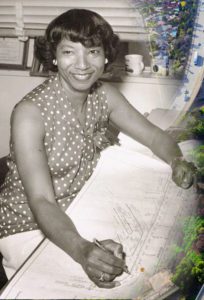
Lois Cooper was the first African American woman transportation engineer to be hired in the California Department of Transportation (Caltrans) Engineering Department. Born in Mississippi in 1931, she studied at Tougaloo College before moving to Los Angeles where her mother resided. In California, she attended Los Angeles City College and Los Angeles State College where she studied mathematics, oftentimes the only black woman in class. She became the first black woman (and second woman) to obtain a Professional Engineer’s license (PE) in California, passing the exam on her first attempt. Cooper was the first woman director of the First Diamond Lane, the predecessor to carpool lanes.
![]()
Ellen Swallow Richards
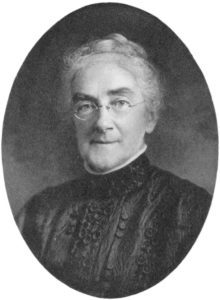
The first female student of the Massachusetts Institute of Technology (MIT), Ellen Swallow Richards (1842–1911), graduated in 1873. She was the first woman in the United States accepted to a school of science and technology, and the first American woman to earn a degree in chemistry, which she obtained from Vassar College in 1870. Decades later, after the completion of the first women’s dormitory on campus, in 1964, the number of women enrolled at MIT swelled. Richards’ interests included applying scientific principles to domestic situations, such as nutrition, clothing, physical fitness, sanitation, and efficient home management, creating the field of home economics. For an interesting photo of Richards with her fellow MIT chemistry staff members, visit the EngineerGirl article on Ellen Richards.
![]()
Mildred Dresselhaus
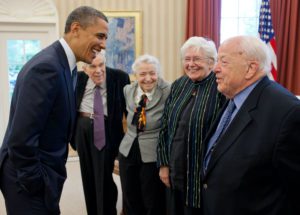
Mildred Dresselhaus, sometimes known as the “Queen of Carbon Science,” was an American nanotechnologist and was an Institute Professor and Professor Emerita of physics and electrical engineering at the Massachusetts Institute of Technology. She won numerous awards including the Presidential Medal of Freedom, the National Medal of Science, the Enrico Fermi Award, and the Vannevar Bush Award. In 2000–2001, she was the director of the Office of Science at the U.S. Department of Energy. Dresselhaus was noted for her work on graphite, graphite intercalation compounds, fullerenes, carbon nanotubes, and low-dimensional thermoelectrics. Her research helped develop technology based on thin graphite which allow electronics to be “everywhere,” including clothing and smartphones.
![]()
Marilyn Jorgenson Reece
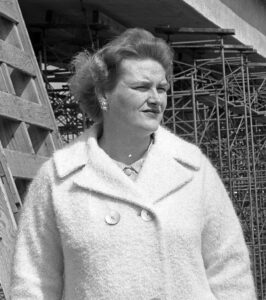
A native of North Dakota, Marilyn Jorgenson Reece was an American civil engineer and the first woman to be licensed as a civil engineer by the state of California. After earning a degree in civil engineering from the University of Minnesota in 1948 she moved to California where she began working for the State Division of Highways.
In the 1960s, she designed an innovative interchange – now named after her – in the Los Angeles freeway system that handled fast moving traffic at the interchange of the Santa Monica Freeway (I-10) and the San Diego Freeway (I-405). In recognition of her efforts on this project, California Governor Pat Brown presented her the Governor’s Design Excellence Award.
Reece told the Los Angeles Times that she had designed the interchange with aesthetics in mind, putting her “heart and soul into it. … It is very airy. It isn’t a cluttered, loopy thing.”

